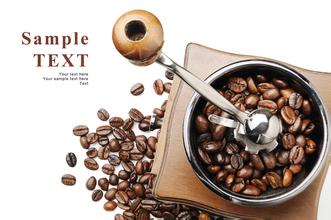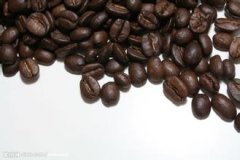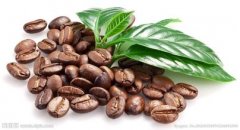A brief introduction to the treatment method of grinding degree and baking degree of Brazilian boutique Syrador coffee

From 2011 to 2012, in order to find out the variety of this part of the coffee, I personally went to Dahongpo to have a look. According to the collected samples and the morphological analysis of the trees, it can be determined that this part of the coffee tree introduced by Yang Fakuan is bourbon or bourbon variety Kaddura.
One day R boutique coffee manor is put forward by senior coffee practitioner Wen Coffee, and together with high-quality and multi-land producing areas, experienced farmers work together to establish a boutique coffee experimental base, after a long period of training, trial planting and breeding, select high-quality coffee and adjust measures to local conditions; finally get the unique regional flavor garden boutique coffee beans
Brazilian Hilado coffee taste brewing method Flavor description Grinding scale Variety Origin introduction Anchor Point
Semi-washed coffee is mainly produced in the Hirado area, which is characterized by the fact that the coffee beans are not impregnated through the fermentation tank. The acidity, sweetness, seasoning, and flavor of the coffee are quite good. According to coffee experts, semi-washed coffee beans contain fewer defective beans than the drying method, and are rich in sour taste. If you use shallow baking, it will taste like grass, while deep baking will make the bitterness extremely obvious, so it is most suitable for moderate baking.
Syrador is right here. As early as 30 years ago, the region of Hirado was not known to the world; it was once a desolate mountain located quietly in Brazil, so Hirado meant "barbaric" in Portuguese. Syrador is now a famous coffee producer, and its coffee is mechanized on a flat plateau about 1000 meters above sea level. Its unique soil and rich groundwater are indispensable ecological conditions for producing high-quality coffee in Xiladuo.
Producing area: Syrador
Variety: yellow bourbon
Treatment: insolation
Brazil is known as the kingdom of coffee. It is the largest coffee producer and exporter in the world. The output value of coffee accounts for more than 30% of the world's output value. 1% of the coffee in the world is produced here. Brazil is also the second largest coffee consumer in the world after the United States. About 300000 farmers here are engaged in the coffee industry. It not only carries the important task of Brazil's economic development, but also affects the development of international coffee. You know, the vast majority of instant coffee is made from Brazilian coffee.
Brazil is vividly compared to the "giant" and "monarch" of the coffee world. There are about 3.97 billion coffee trees there, and small farmers now grow 75% of Brazil's total coffee production. Brazil produces twice or even three times as many coffee as Colombia, which is the second largest coffee producer in the world.
Other kinds of Brazilian coffee, such as Rio and Parana, can be produced in large quantities because they do not require too much care. Although the taste is rough, it is a kind of high-quality and inexpensive coffee, which has its own standards because it is distributed all over Brazil and varies in quality (NO.2~NO.8 according to the number of sundries, NO.13~NO.19 according to the size of beans, and six grades according to taste). Almost all Arabica varieties are of good quality and stable in price. The most famous one is "Brazil Santos", which has been a necessity of blended coffee and is familiar to the public since ancient times. Recently, the rating of "Guilma Cup" is also very high.
Coffee in Brazil has been its pillar industry for a long time. From the market point of view, coffee and its processed products are rich in caffeine, exhilarate and play an important role in the working group dominated by mental workers, so they play a huge role in modern society, so the market is broad. Taken together, Brazil ranks first in coffee production in the world.
Brazilian coffee taste with a low sour taste, with the sweet and bitter taste of coffee, the entrance is very smooth, and with a hint of grass, slightly bitter in the fragrance, smooth and smooth, the aftertaste can make people comfortable and pleasant. There are no outstanding advantages for Brazilian coffee, but there are no obvious defects. The taste is mild and smooth, the acidity is low, the mellow is moderate, and there is a hint of sweetness. All these soft flavors are mixed together. To distinguish them one by one is the best test for the taste buds, which is why many Santos fans love this kind of coffee, just because it is so mild and ordinary.
Brazilian Yellow bourbon Coffee Flavor description Taste Grinding scale Variety production area brief introduction Anchor Point
Because the mature fruit of this variety of coffee is more balanced, the fruit is uniform, and the proportion of effective grade rice is higher, so it is loved by growers. Subsequently, farmers in nearby villages such as Mangliu and Manhai were also introduced one after another.
At present, the yellow coffee planted by the Dahongpo Cooperative has become a forest. Other villages are scattered into blocks.
Important Notice :
前街咖啡 FrontStreet Coffee has moved to new addredd:
FrontStreet Coffee Address: 315,Donghua East Road,GuangZhou
Tel:020 38364473
- Prev

History and Culture of Coffee Origin in Brazil, the largest Coffee producer and exporter in the World
Through 20 years of research and development and cultivation, the trembling world of Datra sweetness has been born under the watch of scientists. The results it has achieved will also impress you on Brazilian coffee, the famous Danish coffee maker Terres. Paulson won the 2005 International Cup barista contest with the espresso formula of Datla Sweets. Klaus in 2006. Thomson also took
- Next

Brazil fine coffee varieties planting market price profile
Moreover, the semi-solarization method also inherits the advantages of the solarization method to improve sweetness, but it has less unpleasant earthy taste, winning praise from international coffee experts. The winners of Brazil's Super Cup of National Beans almost all used the semi-sun method, because this treatment can reduce the traditional earthy and woody taste of Brazil beans, and enhance the fruity and sweet taste, which is most suitable for single products. Therefore, semi-sun method has become a must for Brazil's fine beans.
Related
- Detailed explanation of Jadeite planting Land in Panamanian Jadeite Manor introduction to the grading system of Jadeite competitive bidding, Red bid, Green bid and Rose Summer
- Story of Coffee planting in Brenka region of Costa Rica Stonehenge Manor anaerobic heavy honey treatment of flavor mouth
- What's on the barrel of Blue Mountain Coffee beans?
- Can American coffee also pull flowers? How to use hot American style to pull out a good-looking pattern?
- Can you make a cold extract with coffee beans? What is the right proportion for cold-extracted coffee formula?
- Indonesian PWN Gold Mandrine Coffee Origin Features Flavor How to Chong? Mandolin coffee is American.
- A brief introduction to the flavor characteristics of Brazilian yellow bourbon coffee beans
- What is the effect of different water quality on the flavor of cold-extracted coffee? What kind of water is best for brewing coffee?
- Why do you think of Rose Summer whenever you mention Panamanian coffee?
- Introduction to the characteristics of authentic blue mountain coffee bean producing areas? What is the CIB Coffee Authority in Jamaica?

